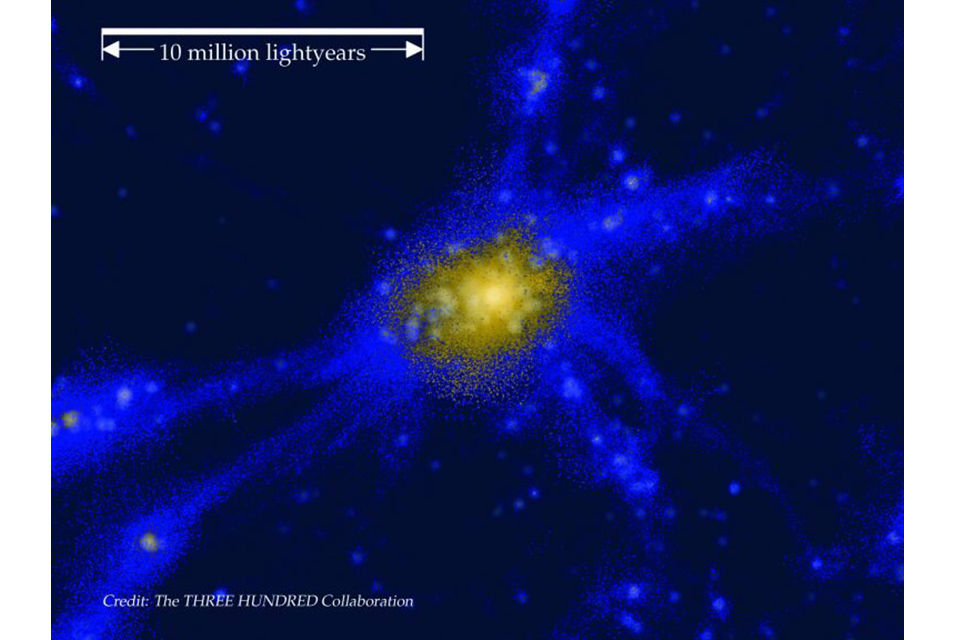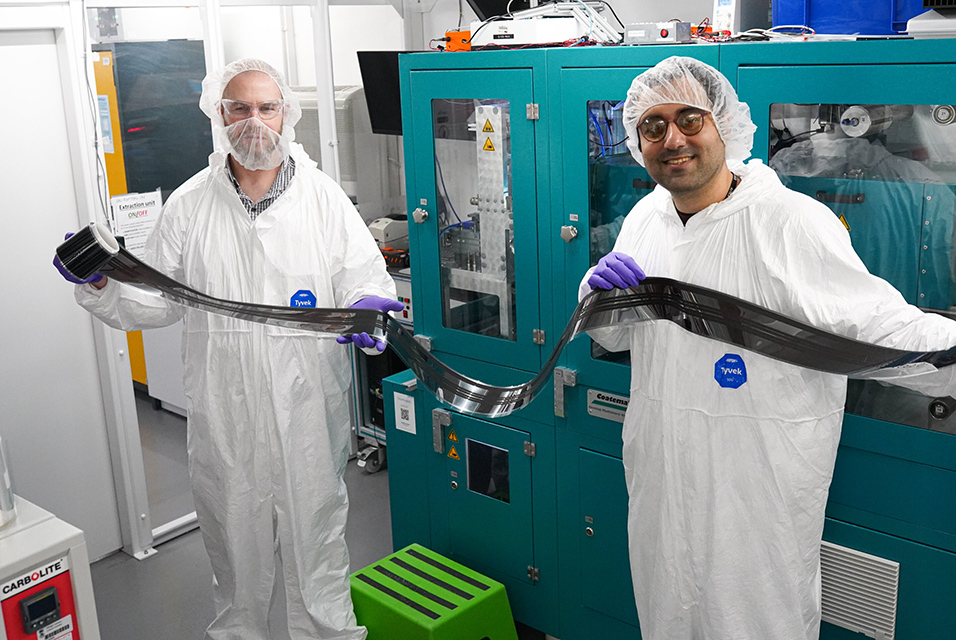WAIMEA, HI.- Astrophysicists using
W. M. Keck Observatory on Maunakea in Hawaiʻi have discovered a galaxy protocluster in the early universe surrounded by gas that is surprisingly hot.
This scorching gas hugs a region that consists of a giant collection of galaxies called COSTCO-I. Observed when the universe was 11 billion years younger, COSTCO-I dates back to a time when the gas that filled most of the space outside of visible galaxies, called the intergalactic medium, was significantly cooler. During this era, known as "Cosmic Noon," galaxies in the universe were at the peak of forming stars; their stable environment was full of the cold gas they needed to form and grow, with temperatures measuring around 10,000 degrees Celsius.
In contrast, the cauldron of gas associated with COSTCO-I seems ahead of its time, roasting in a hot, complex state; its temperatures resemble the present-day intergalactic medium, which sear from 100,000 to more than 10 million degrees Celsius, often called the "Warm-Hot Intergalactic Medium" (WHIM).
This discovery marks the first time astrophysicists have identified a patch of ancient gas showing characteristics of the modern-day intergalactic medium; it is by far the earliest known part of the universe that's boiled up to temperatures of today's WHIM.
The research, which is led by a team from the Kavli Institute for the Physics and Mathematics of the Universe (Kavli IPMU, part of the University of Tokyo), is published in The Astrophysical Journal Letters.
"If we think about the present-day intergalactic medium as a gigantic cosmic stew that is boiling and frothing, then COSTCO-I is probably the first bubble that astronomers have observed, during an era in the distant past when most of the pot was still cold," said Khee-Gan Lee, an assistant professor at Kavli IPMU and co-author of the paper.
The team observed COSTCO-I when the universe was only a quarter of its present age. The galaxy protocluster has a total mass of more than 400 trillion times the mass of our Sun and spans several million light years.
While astronomers are now regularly discovering such distant galaxy protoclusters, the team found something strange when they checked the ultraviolet spectra covering COSTCO-I's region using Keck Observatory's Low Resolution Imaging Spectrometer (LRIS). Normally, the large mass and size of galaxy protoclusters would cast a shadow when viewed in the wavelengths specific to neutral hydrogen associated with the protocluster gas.
No such absorption shadow was found at the location of COSTCO-I.
"We were surprised because hydrogen absorption is one of the common ways to search for galaxy protoclusters, and other protoclusters near COSTCO-I do show this absorption signal," said Chenze Dong, a Master's degree student at the University of Tokyo and lead author of the study. "The sensitive ultraviolet capabilities of LRIS on the Keck I Telescope allowed us to make hydrogen gas maps with high confidence, and the signature of COSTCO-I simply wasn't there."
The absence of neutral hydrogen tracing the protocluster implies the gas in the protocluster must be heated to possibly million-degree temperatures, far above the cool state expected for the intergalactic medium at that distant epoch.
"The properties and origin of the WHIM remains one of the biggest questions in astrophysics right now. To be able to glimpse at one of the early heating sites of the WHIM will help reveal the mechanisms that caused the intergalactic gas to boil up into the present-day froth," said Lee. "There are a few possibilities for how this can happen, but it might be either from gas heating up as they collide with each other during gravitational collapse, or giant radio jets might be pumping energy from supermassive black holes within the protocluster."
The intergalactic medium serves as the gas reservoir that feeds raw material into galaxies. Hot gas behaves differently from cold gas, which determines how easily they can stream into galaxies to form stars. As such, having the ability to directly study the growth of the WHIM in the early universe enables astronomers to build up a coherent picture of galaxy formation and the lifecycle of gas that fuels it.










